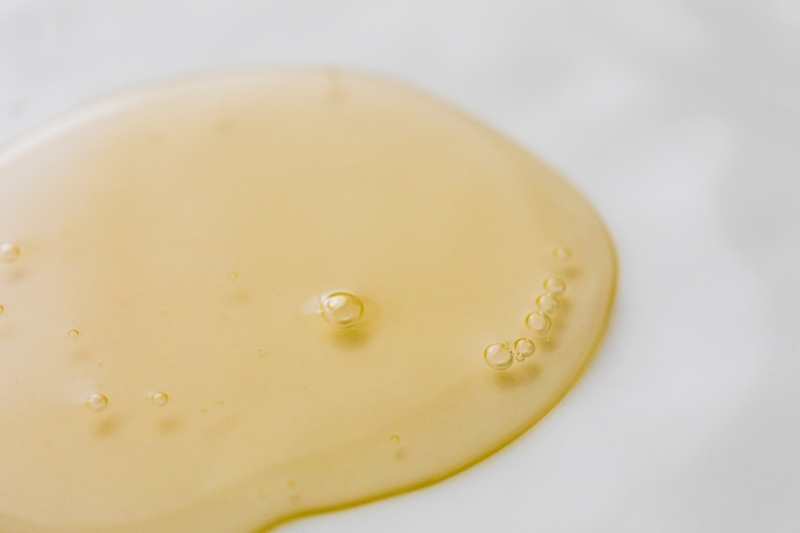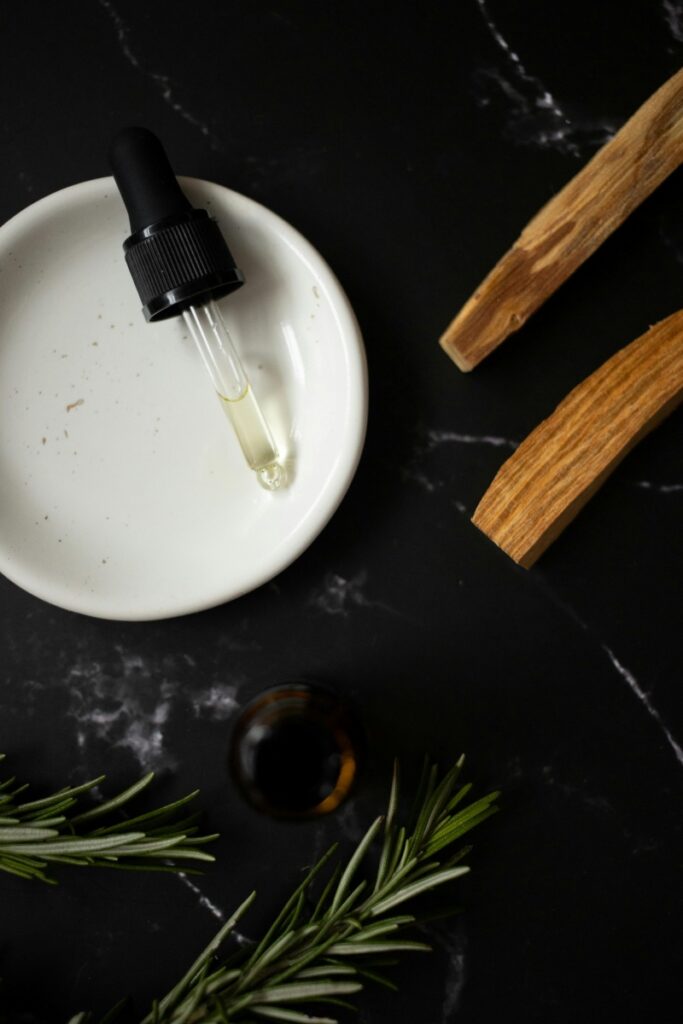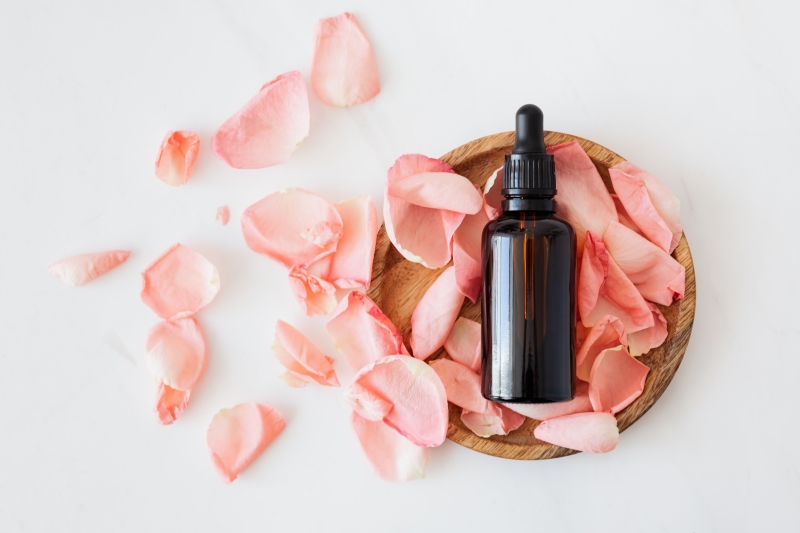Essential oil dilution has been a controversial topic for some: is it more effective to mix with another oil or use it directly?
This article guide discusses the details of mānuka oil dilution, its benefits, and how to dilute mānuka oil correctly.
What is Mānuka Oil?
Mānuka oil is an all-natural essential oil distilled from the leaves and branches of the mānuka tree. This essential oil has garnered recognition for its antimicrobial properties, rendering mānuka oil a sought-after ingredient in skincare formulations, effectively fighting acne and addressing minor cuts and abrasions. Moreover, owing to its pleasing fragrance, mānuka oil has become a favoured choice for aromatherapy, where its diffusion aids in stress reduction and fosters a state of relaxation.
Beyond its applications in skincare and aromatherapy, mānuka oil has been found to be of great use in respiratory wellness. Inhaling the vapours of mānuka oil has shown potential relief during colds and respiratory discomfort. Furthermore, it has also proven helpful for hair care, contributing to scalp health and managing dandruff.
Where Does Mānuka Oil Come From?
Mānuka oil is derived from the mānuka tree, scientifically known as Leptospermum scoparium. It is native to New Zealand and specific regions of Australia. This natural oil is extracted from the leaves and branches of the mānuka tree using a process called steam distillation. This process yields a concentrated oil that retains the unique properties and potential health benefits for which mānuka oil is renowned, including its antimicrobial and aromatherapeutic qualities.
Why Should You Dilute Mānuka Oil?
Before incorporating mānuka oil into your daily regimen, it is vital to understand the significance of dilution. Essential oils, like mānuka oil, are potent and concentrated extracts derived from plants, representing a highly concentrated form of their natural counterparts. Using them without proper dilution can lead to skin irritation and adverse reactions. To ensure safety and maximise benefits, always opt for a non-comedogenic carrier oil, such as grapeseed oil, before applying mānuka oil to the skin.
Read about mānuka oil expiration here.
Risks of Using Undiluted Essential Oils
Using undiluted essential oils can lead to several problems:
- Skin Issues: It may cause skin irritation, redness, or burns.
- Internal Harm: Ingesting undiluted essential oils can be harmful, as some are toxic or irritating to the organs.
- Strong Scents: Using pure oils in diffusers or other methods can create overpowering scents, causing discomfort and potential breathing problems.
What to Consider When Deciding on Dilution Ratios
The correct dilution ratio for essential oils isn’t a one-size-fits-all formula. Consider these four factors for safe and effective use:
- Intended Use: How one uses the oil matters; skin application may need less dilution than diffusing.
- Application Method: Different uses (skin, inhalation, ingestion) may need different dilution ratios.
- Personal Sensitivity: Remember that individual reactions to oils differ. Consider sensitivity when diluting.
Generally, for most uses, many experts recommend a dilution ratio of 1-2%, which means adding 1-2 drops of essential oil per 5 mL teaspoon of carrier oil.
For the correct dilution ratio of specific needs, it is advisable to consult reputable sources and seek guidance from qualified professionals like aromatherapists or healthcare practitioners.
How to Dilute Mānuka Oil

Achieving the appropriate dilution of mānuka oil is a critical consideration, and the degree of dilution primarily depends on the intended application. Here is a breakdown of general dilution guidelines:
Aromatic Use: To enjoy mānuka oil’s aroma, add 2-3 drops to 100 mL of water in a diffuser or a personal inhaler for a pleasant scent.
Topical Application: For skin safety, dilute mānuka oil to 2-4% by mixing it with a carrier oil to maximize its therapeutic benefits while reducing skin irritation risks.
How to Dilute Essential Oil with a Carrier Oil Correctly
Undiluted essential oils are exceptionally potent, posing risks when directly applied to the skin. Hence, diluting essential oil with carrier oils like argan or lavender is necessary, especially for topical and massage applications.
Here is a simple step-by-step guide to help achieve the correct dilution ratio:
Step 1: Decide on What Essential Oil and Carrier Oil to Use.
Start by selecting the essential oil and carrier oil of preference. Consider the purpose of the blend and the recommended dilution ratio.
Step 2: Opt for the Right Container
Use a clean, dark glass bottle to store the diluted blend. Opaque glass helps protect the oils from light, ensuring they last longer.
Step 3: Calculate the Ratio
A standard 1-2% ratio for topical use translates to 1-2 drops of essential oil for every 5 mL teaspoon of carrier oil. For precise ratios, it is best to consult reliable sources or seek advice from an expert such as an aromatherapist or healthcare professional.
Step 4: Measure and Mix
Carefully measure the desired amount of carrier oil into the glass bottle using a clean dropper or pipette. Gently swirl the bottle to mix. Based on the calculated ratio, add the appropriate number of drops of essential oil.
Step 5: Label and Store
Label the blend with the essential oil, dilution ratio, and preparation date. Keep the bottle in a dark place, away from heat and sunlight.
Following these steps helps create diluted essential oil blends tailored to specific needs safely and effectively.
Easy Ways to Dilute Essential Oils
In addition to the conventional carrier oil method, there are alternative techniques for effectively diluting essential oils. These methods are diverse and can accommodate various applications and preferences. Here are some of them:
Dilution with High-Proof Alcohol
When making room sprays or perfumes, high-proof alcohol such as vodka or rubbing alcohol is a suitable dilution medium for essential oils. To employ this technique, prepare a small glass or plastic spray bottle, high-proof alcohol, distilled water, and chosen essential oil. Here is the procedure:
- Begin by filling the spray bottle with your preferred high-proof alcohol, leaving some space at the top.
- Mix alcohol and a few drops of essential oil. Optional: Adjust the quantity based on the desired potency and fragrance.
- Complete the mixture by filling the remaining space in the bottle with distilled water.
- Shake the bottle to blend all the ingredients thoroughly.
- Utilise the spray as required, and avoid contact with the eyes or sensitive areas.
Dilution with Lotions or Creams
An alternative approach involves diluting essential oils with a neutral, unscented lotion or cream to create topical blends. Follow these steps:
- Choose a neutral, unscented lotion or cream.
- Incorporate a few drops of essential oil into the lotion or cream, adhering to the desired dilution ratio.
- Ensure thorough mixing until the essential oil is distributed uniformly throughout the lotion or cream.
- Apply the resulting blend to the skin, avoiding sensitive areas or open wounds.
Dilution with Lotion Bars or Solid Oils
Consider utilising lotion bars or solid oils for a convenient and travel-ready means of diluting essential oils for topical application. The process involves:
- Melting beeswax and solid carrier oil in a double boiler or microwave until fully liquefied.
- Allowing the mixture to cool slightly.
- Incorporating several drops of essential oils into the melted blend according to the desired dilution ratio.
- Stirring the mixture vigorously to ensure even distribution of the essential oils.
- Pour the prepared mixture into silicone moulds or small containers and permit it to solidify completely.
- Once hardened, these lotion bars or solid oils are ready. Apply to the skin and massage gently.
Dilution with Aloe Vera Gel
Aloe vera gel provides a soothing and hydrating carrier medium suitable for diluting essential oils, mainly when aiming for skincare or sunburn relief. To achieve this:
- Clean the container to be used and fill with the preferred aloe vera gel.
- Introduce a few drops of essential oils into the aloe vera gel based on the desired dilution ratio.
- Stir the mixture thoroughly to integrate the essential oils with the aloe vera gel.
- Apply the resulting blend to the skin, avoiding sensitive or damaged skin.
These alternative dilution methods offer versatility in incorporating essential oils into various applications, catering to individual preferences and specific needs.
Dilution Ratios

One key point to understand: essential oils and water don’t mix well. Combining essential oils with water isn’t recommended because they have different chemical properties. When used, this mixture can lead to uneven distribution and potential skin irritation or sensitivity.
Always opt for carrier oils such as argan, coconut, or almond oil to ensure safe and effective dilution. These carrier oils effectively blend with essential oils and provide a safe ingredient for application.
Using essential oils topically is typical for various skin, hair, and scalp issues, as well as for relaxation through massage to ease muscle and joint discomfort. In all cases, it’s crucial to understand dilution basics before use. The amount of carrier oil to be used depends on several factors:
- Age: Different dilution ratios apply to adults and children.
- Purpose: Specific uses, such as treating acne, scalp care, or soothing inflammation, require distinct dilution ratios.
- Essential Oils: Each essential oil varies in strength, resulting in different dilution rates.
- Individual Sensitivity: Consider how the skin reacts to an essential oil.
Here are the general recommended dilution ratios:
- A 0.5-1% dilution (3-6 drops of essential oil per 1 ounce) works well for sensitive or delicate skin areas.
- A 2-3% dilution (11-17 drops of essential oil per 1 ounce) is the typical concentration for massage oils, creams, and DIY recipes intended for adults.
- A 5%-10% dilution (30-60 drops or 1.5-3 mL) is recommended for short-term issues like infections. However, avoid using this concentration for more than a week at a time.
- For one-time applications such as wart removal, addressing fungal infections, or easing joint discomfort: Add 150 drops of essential oil. Next, mix the blend with 30 mL of carrier oil.
It is crucial to emphasise that dilution rates exceeding 25% are not advisable, as highly concentrated essential oils can lead to skin sensitisation and various adverse reactions.
Remember that the above ratios are general guidelines and only serve informational purposes. Always consult reliable sources or experts who can offer precise dilution instructions tailored to needs for specific uses.

